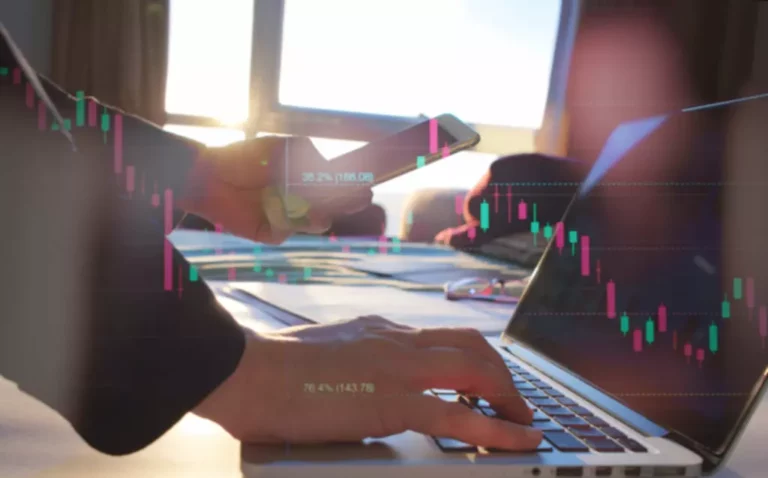Content
IBKR does not make any representations or warranties concerning the past or future performance of any financial instrument. By posting material on IBKR Campus, IBKR is not representing that any particular financial instrument or trading strategy is appropriate for you. The tax treatment of ETPs varies depending on the nature of the product, etp vs etf and not all ETPs offer the same tax efficiencies. Leveraged and inverse ETPs, precious metal and other commodity ETPs, and currency ETPs, for example, can create tax liabilities.
Exchange-Traded Commodities (ETCs)
They consist of a mix of screens from providers representing different equity styles and are intended to reflect current market trends. Click “View All Expert Strategies” to see the full list of available screens. Each week this section will feature ETFs/ETPs that a third party research firm views as bullish or bearish. Sabrient selects its ETF Bulls or Bears of the Week using a proprietary methodology that combines Sabrient’s Outlook Scores with its Bull Decentralized finance or Bear Score. This results in a ranked universe of some 300+ ETFs, out of which Sabrient selects three from the highest rankings and three from lowest for its ETF Bulls/ Bears of the week. This content is provided for educational purposes only and is updated before the market opens each Monday.
NYSE: The Home of Exchange Traded Products
With the vast array https://www.xcritical.com/ of ETPs available, selecting the right one can seem daunting. Consider your investment goals, risk tolerance, and the sectors or assets you wish to gain exposure to. Researching and comparing different ETPs based on their performance, fees, and underlying assets is crucial. ETPs, or exchange-traded products, are popular among investors and traders because they offer wide exposure across diverse asset classes. An exchange-traded product (“ETP”) is a tradeable financial instrument that closely tracks an underlying market, such as indices, currencies, and shares.
Stocks & exchange traded products (ETPs)
SPY would be efficient for gaining exposure to the broad index through a single product. Given the novelty of this product, there were regulatory and logistical hurdles to overcome. Until then, stock exchanges focused on individual company stocks rather than pooled investment products. Join TIOmarkets, a top-rated forex broker, and access a world of trading opportunities. With over 170,000 accounts opened across more than 170 countries, we provide a platform to trade 300+ instruments across 5 markets, including Forex, indices, stocks, commodities, and futures, all with low fees. Enhance your trading skills with our educational resources and step-by-step guides.
This is because they are designed to track an index or other benchmark, rather than actively managing a portfolio of assets. This passive management approach can result in lower operating expenses, which can be passed on to investors in the form of lower fees. Key advantages of ETFs include their trading convenience, broad diversification, and transparency, with daily disclosure of holdings.
Credit risk is the risk that the issuer of an ETP will not be able to meet its financial obligations. This is a particular risk for ETNs, which are debt instruments issued by financial institutions. Liquidity risk is the risk that an investor will not be able to buy or sell an ETP at a desirable price due to a lack of market liquidity.

This lesson highlights some of the opportunities and risks presented by ETPs. Alex was an award-winning television news anchor and reporter in Marquette, Mich., and Charlotte, N.C., before returning home to St. Louis. His aim is to help people make informed financial decisions that address their full financial circumstances.
This lesson focuses on Oil ETPs and what investors should be aware of when deciding to invest in these products. As we implement your strategy, we will continue to work together to monitor your progress, making adjustments as your needs and goals change, and/or as opportunities in the markets present themselves. In the dynamic world of Forex trading, leverage is a crucial concept that has the potential to significantly amplify profits or losses. ETPs encompass a variety of products, each with its unique characteristics and applications.
We need to understand what is important to each client to help them achieve their goals. Our firm’s mission statement leads us to provide personalized investment advice and world class service, and our team strives to achieve this with every client. To support clients’ success, we offer financial and retirement planning strategies, advisory services, and professional asset allocation guidance.

In addition to any brokerage commission that you might pay, ETPs have expense ratios, like mutual funds, calculated as a percentage of the assets invested, but they don’t have loads or 12b-1 fees. Exchange-traded commodities (ETCs) are debt instruments that do not come with interest payments. They are designed to provide access to an individual product or a basket of items. The ETC framework is often used to provide investors with significant exposure to currencies, either as individual currency pairs or as a currency basket. Usually, an ETF tracks an index fund, such as the S&P 500, but it can also follow a market, commodity, industry, or even a currency. The price of an exchange-traded fund will increase and decrease, much like most investments.
- Yep, we’re talking exchange-traded stuff again, but this one is the exchange-traded note.
- FINRA Data provides non-commercial use of data, specifically the ability to save data views and create and manage a Bond Watchlist.
- ETP shares are traded on stock exchanges throughout the trading day at market prices, providing intraday liquidity and flexibility.
- While this function may be of use to investors in evaluating certain information about ETPs, it should not be considered to include every factor that may be necessary for an investor to make a decision to invest in an ETP.
ETPs are financial instruments listed and exchanged in the same manner as shares across the same exchanges and platforms. An exchange-traded product (ETP) is a liquid asset backed by a pool of market makers and approved members. Banks do the same thing by saying they’ll pay you back based on a specific stock index.
Exchange traded products offer a number of potential benefits to investors. These include diversification, flexibility, transparency, and cost efficiency. Each of these benefits can play a key role in helping investors achieve their investment objectives.
In recent years, ETPs backed by commodities, crude oil, and cryptocurrencies have gained significant traction as investors seek returns in hard assets. ETPs include other securities beyond ETFs, such as exchange-traded notes (ETNs) and exchange-traded commodities (ETCs). ETNs are debt instruments that track an index while carrying credit risk, while ETCs offer exposure to commodities and currencies, but can face unique risks discussed below.
ETF liquidity also depends on a unique creation and redemption mechanism that allows for the adjustment of supply in the market, helping to maintain the ETF’s price close to its net asset value (NAV). As a debt instrument, ETNs carry credit risk should the issuing institution default. As a result, the SEC monitors ETNs more closely than it does the diversification and tracking error risks of ETFs. While both are ETPs, the SEC tailors its approach based on each structure’s characteristics to safeguard investors. The S&P Midcap 400/BARRA Growth is a stock market index that provides investors with a benchmark for mid-cap companies in the United States.



















